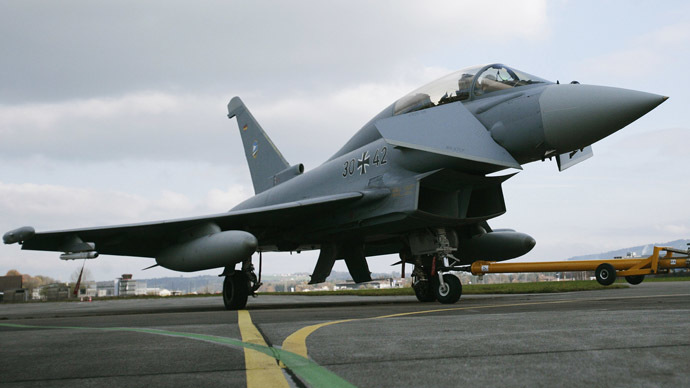The German Air Force has spotted a manufacturing fault in the hull of Eurofighter Typhoon multirole fighter jet. The Defense Ministry ordered annual flying hours for each aircraft be halved due to the fuselage possibly becoming unstable.
The defect was discovered in the rear section of the aircraft’s hull, forcing the announcement of suspended delivery of the jets assembled at the EADS plant in Germany’s Manching, news website Spiegel Online reported.
Germany’s Luftwaffe also made a decision to cut annual flight time for each Eurofighter jet from 3,000 to 1,500 hours annually.
Britain’s Royal Air Force was first to detect the defect and also opted to halve the annual flight hours so as not to overstress the fighter jets, the news website maintained.
For Germany, which reportedly possesses 109 Eurofighter Typhoon jets, as well as for Great Britain, this sophisticated twin-engine warplane is the main air defense fighter aircraft.
The Eurofighter jets are built by a consortium of Europe’s aircraft maker Airbus, Britain’s BAE Systems and Italy’s Finmeccanica.
An incident involving Spanish Air Force’s Eurofighter in June resulted in the death of a 30-year-old pilot, although the cause of the catastrophe has not yet been announced.
Because both Berlin and London have halved the original order of 250 fighter jets each, the head of Airbus’s defense division announced that in absence of new contracts, production of the Eurofighter Typhoon jets could be stopped in 2018.
Luftwaffe not ready for armed conflict
An analysis prepared by Der Spiegel magazine in August revealed that the German Air Force is suffering funding shortages and a lack of parts, a study that was consistently denied by the Ministry of Defense.
Yet a month later, in late September, Germany’s Defense Minister Ursula von der Leyen told Bild am Sonntag media outlet that Berlin would not currently be able to keep its defense promises to its NATO allies.
In a parallel report, Der Spiegel magazine maintained that only 24 out of a total of 109 German Eurofighter jets were ready for service, and only 38 out of 89 of Tornado fighters could be put in the air.


